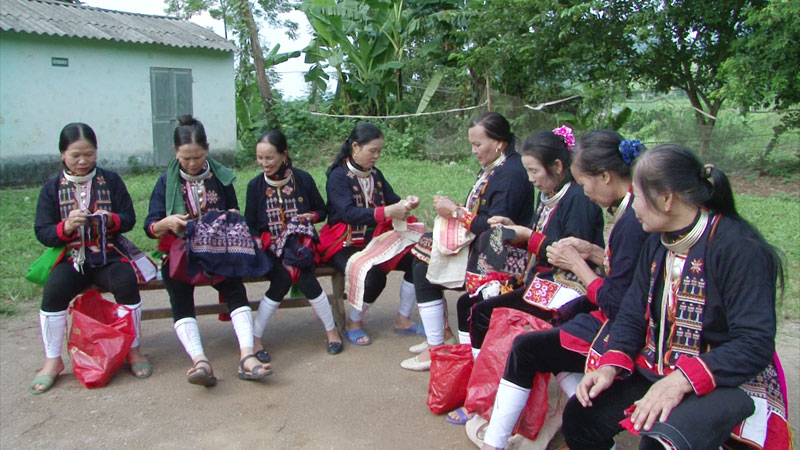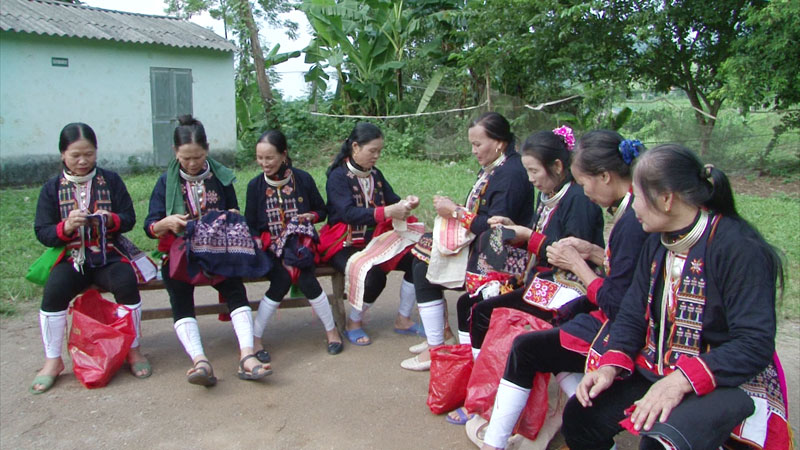



Clothes of the Dao groups are decorated with unique patterns on the background of indigo colour, with a harmonious combination of accessories like scarves and jewelries. Dao quan chet women boast a special dressing style as their trousers are tightened to their legs.
Ban Sinh Luong, a prestigious elderly in the Dao quan chet community in Dong Chua hamlet, Thong Nhat commune, Hoa Binh city, said Dao people still wear their traditional costume during the Tet festival, weddings and funerals.
Apart from shirts and pants, Dao women also put on other accessories such as brassieres, headscarves, silver necklaces and belts.
It is noteworthy that Dao quan chet people do not practise weaving and they have to buy fabric to make clothes. However, they weave belts themselves and embroider them with colourful patterns. The art of fabric decoration has been preserved among the community, and girls have to learn these skills from their mothers, grandmothers, other family members and villagers at a fixed age.
Dao quan chet women do not wear skirts but pants (Hau) that are made of indigo fabric ending below knees and tightened to legs. Pant cuffs are decorated with patterns and edges are stitched with colourful threads.
Of note, Dao quan chet women wrap their calves with xa cap (chay keo) made of white fabric clockwise.
Another important accessory of Dao quan chet women is the scarf (called Coong pe song in local language), made of three layers of black fabric whose ends are decorated with floral patterns, eight-pointed stars and "Longevity” letter.
Unlike women, Dao men’s costume is simple, comprising shirts (chang lui), trousers (chang hau) and scarves (goong xong) of indigo or black colours.
To preserve the traditional costume and culture, the provincial People’s Committee has devised a project on building a centre protecting culture of the Dao quan chet ethnic minority group in Thong Nhat commune in service of community-based tourism. The project has also helped locals raise their income and living standards./.